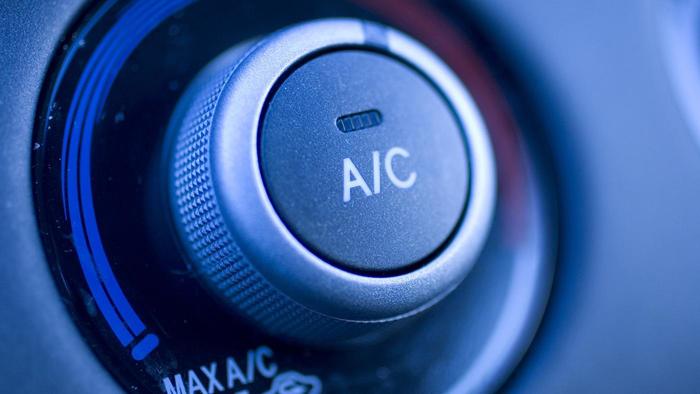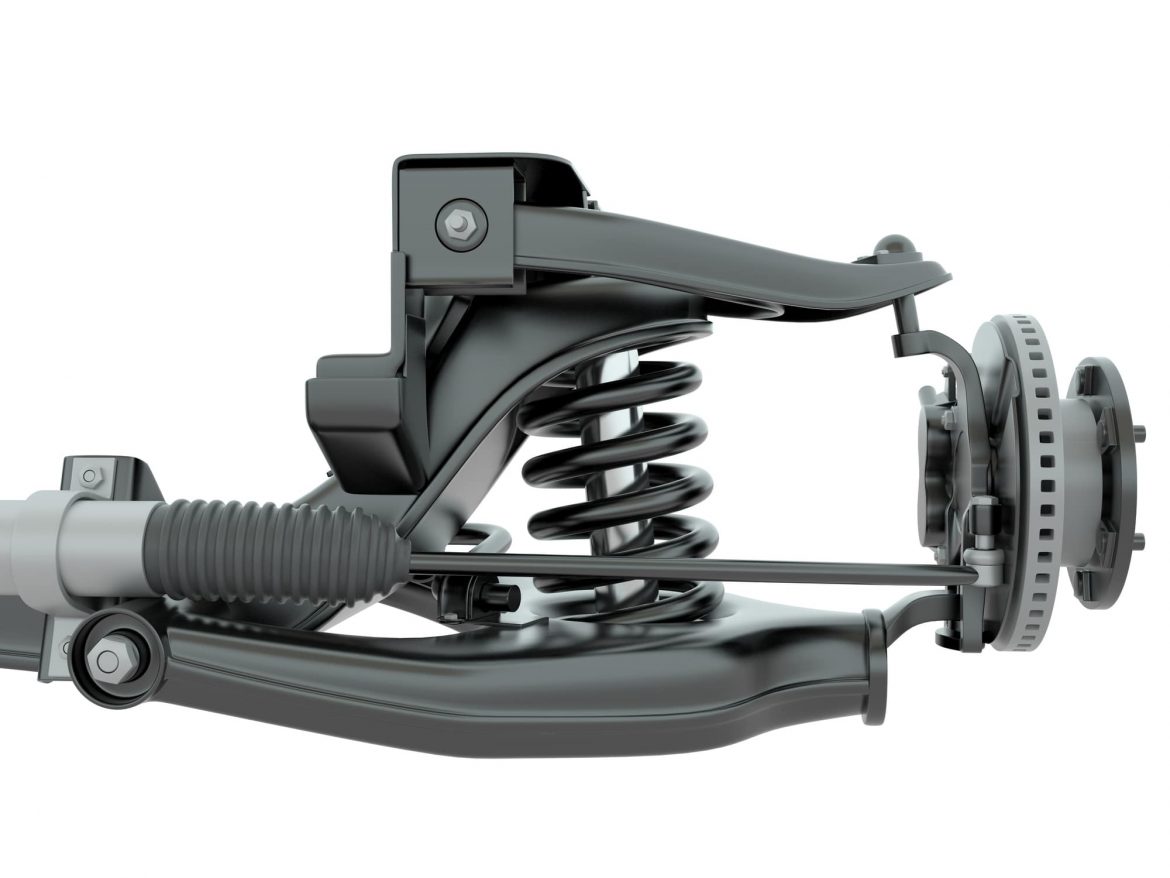Your automobile operates on a carnival of boiling and cooling, valves opening and closing, metal pumping up and down, flowing liquids and little explosions dozens of times per minute. With all the moving parts, it’s a wonder that your car isn’t breaking down constantly.
Yet, with a little maintenance, today’s cars can last half-a-million miles over more than a decade, and most of that can be attributed to a series of fluids that regulate temperature, lubricate parts, clean and protect, and even transmit messages.
That’s why, when you have fluid leaking from anywhere in the vehicle, it is a problem you need to address – often urgently. And because there are so many liquids in your car – motor oil, antifreeze, brake fluid and more, it is important to understand what it means when red liquid is leaking from the car as opposed to green liquid leaking from the car or brown liquid leaking from the car. There is a big difference between losing windshield wiper fluid and losing coolant. The first is a potential inconvenience and the second is a potential engine replacement.
Fluids Used in Your Car
It makes a difference too, whether the fluid is leaking from your radiator, gas tank or engine block because you need to know whether to add coolant, motor oil or gasoline. More to the point, you need to know what to repair. So, let’s consider what these fluids do and what a leak of each of them means.
Motor oil – The lifeblood of your vehicle, motor oil lubricates, cools, and protects all the various moving parts in your engine. Without motor oil, these parts would grind together and come to a screeching halt. Driving for any length of time with dangerously low oil levels can literally destroy the engine.
Coolant – A mixture of antifreeze and water, this regulates the temperature of various parts of the engine that could burn up or melt without it. Driving without coolant would leave you on the side of the road with an overheated engine and steam pouring out of your radiator.
Transmission fluid – In all automatic transmission cars, transmission fluid communicates the work of gears to the wheels, lubricating the moving parts in the process. Driving without sufficient fluid levels could lead to a transmission overhaul.
Brake fluid – Necessary for operating the brakes, a brake fluid leak is serious business. When you step on the brake, it compresses the fluid, which forces the calipers to squeeze the rotors against the brake pads, stopping the wheels from turning. Without brake fluid, it would simply be impossible to stop your car with the brakes. No bueno.
Power steering fluid – Power steering assists the driver in steering the car. Without power steering fluid, the driver literally must turn the wheel, which requires brute force, reducing or eliminating safe turning.
Gasoline – This one is a little different because we actually expect gas levels to drop as we operate the vehicle. You already know how to monitor your gasoline levels and replace used gas. But a leak is another matter and, like the others here, could have dire consequences, not to mention the environmental impact of leaving a trail of gasoline behind your car.
Windshield washer fluid – The least consequential and easiest to replace, windshield washer fluid keeps your windshields clean. You can live without this, although at some point your windshield might get dirty enough that it’s unsafe to drive the car.
Six of the seven fluids are critical to the safe operation and good repair of the car, so it is important to pay attention to leaks and address them quickly. Here are the various kinds of leaks and what they mean.
Brown liquid is leaking from car
If you see puddles under your car, usually beneath the engine compartment, that range from light brown to dark brown, this is probably a sign you are losing motor oil, either from a leak or from overfilling the oil reservoir. Engine oil is slippery if you touch it.
If the leak is slow, some drivers simply add a quart now and then between oil changes and don’t worry about it. A more economical and permanent solution is to pour in an 8-ounce bottle of BlueDevil Oil Stop Leak, which seals engine oil leaks permanently and safely. It stops the leak in an hour or two and only needs to be applied once. Because Stop Oil Leak seals gaskets and o-rings, it can be used even if oil is leaking faster than adding a quart now and then will solve.
Other sources, like the head gasket, can leak motor oil and cause enormous harm to the car. If Oil Stop Leak doesn’t do the trick, reach out to BlueDevil’s Ask a Pro for help diagnosing the problem.
What if you find brown fluid in the radiator? Generally that means your coolant is picking up corrosives and rust. This is not an imminent danger but rust is not good for the cooling system, so you should probably have the radiator flushed. Pour a bottle of BlueDevil Radiator Flush in while flushing the cooling system to remove grease, rust, grime or any other build up that occurs during normal vehicle use.
Red liquid is leaking from car
Both power steering fluid and automatic transmission fluid can be red, or reddish-brown, in part because they are similar. Both are hydraulic fluids, meaning that compressing them pushes on another part to make it move. They leak from roughly the same place, so it is difficult to tell them apart based on location.
Coolant is often orange, but may look red when full of contaminants. If you see red liquid leaking from your radiator, that is likely coolant. BlueDevil Radiator & Block Sealer is an easy-to-use formula that will repair and seal leaks in radiators and/or engine blocks. It is a guaranteed permanent radiator sealer. Fix the problem before your engine overheats. Coolant leaks can also be caused by a number of other issues, like a bad water pump or hose clamp. For that you will need to fix the offending part.
Power steering fluid is red, thin, and oily, and can smell like S’mores. (No kidding! Don’t taste it!) If you begin to lose enough power steering fluid, you will notice that it becomes difficult to turn the steering wheel. Red fluid dripping from the car can be easily remedied by adding a bottle of BlueDevil Power Steering Stop Leak, which permanently seals leaks in power steering, differentials, and worn rack and pinion systems.
Automatic transmission fluid feels slick and smells like gasoline. If the leak persists, you will begin to notice trouble shifting gears. Pouring in a bottle of BlueDevil Transmission Sealer permanently seals transmission fluid leaks by restoring dried, cracked and shrunken rubber seals and gaskets.
Orange liquid is leaking from car
Coolant is often colored orange to distinguish it from other automobile fluids. It is easy to identify because it smells sweet. (Again, don’t taste it, and keep small children and pets away from it because it is toxic.)
Manufacturers of antifreeze, the main ingredient in coolant, add various vibrant colors to make it easy to identify their product. That leads to the question, what color is a coolant leak? The answer is: the color of antifreeze leaks are varied: the most common being red, orange, green, purple, blue, yellow and pink. If you see any liquid this color beneath the radiator, it is probably coolant.
Transmission fluid can also take on a dark orangey hue. If you’re not sure, have a mechanic inspect the transmission to determine if the leak is transmission fluid.
Blue liquid is leaking from car
Thin, watery blue liquid that smells like window cleaner…is. Windshield washer fluid may be leaking from a fluid reservoir or from seals or lines that carry the fluid to the wipers.
Light yellow liquid is leaking from car
Oily, fishy-smelling yellow-to-brown fluid on the ground means brake fluid is leaking, and this requires immediate attention. Do not drive your car if you discover a yellow fluid leak. Instead, have a mechanic inspect the brakes, brake lines and brake parts to determine what needs to be replaced. Failing to do so could be catastrophic for you and others.
Clear or rainbow-tinted liquid is leaking from the back of the car
You have a gas leak, which means either your gas tank or your fuel lines are leaking. You can usually look under the car to find the source of the leak and have that repaired. Leaking gasoline ruins gas mileage and the fumes are flammable.
A puddle more than three inches wide beneath a stationary car is considered a serious leak and should be addressed right away. Between one and three inches is considered “seepage” and serves as a warning.
The bottom line is that all fluid leaks should be investigated and addressed ASAP because the car can’t run long without them. A $15 bottle of Stop Leak or even a $500 repair is better and ultimately less expensive than standing on the roadside with a dead engine or inoperable car.
BlueDevil Products can be found on Amazon.com or at AutoZone, Advance Auto Parts, O’Reilly Auto Parts, NAPA, and other major auto parts retailers.
Related Articles



